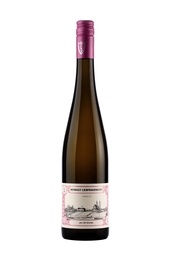|
|
 |

Weingut Liebfrauenstift, Rheinhessen (Germany) Dry Riesling, 2011 (P. J. Valckenberg, $19): If you occasionally taste wines blind, you might have experienced one of the main benefits of blind tasting, the pleasure of  discovering something unexpected or new. When I tasted several 2011 dry German Rieslings recently, I discovered the new face of a very old and very famous wine property. discovering something unexpected or new. When I tasted several 2011 dry German Rieslings recently, I discovered the new face of a very old and very famous wine property.
Weingut Liebfrauenstift is named for the ancient Monastery of Our Lady in Worms, an historic crossroads city in the Rheinhessen region. It is the winery that gave its name to Liebfraumilch wine, an estate wine which enjoyed high acclaim in Europe 200 years ago -- before its name went into wider use in 1908 and eventually came to apply to a large-volume wine produced by numerous wineries in four regions. Until 1808, the vineyards belonged to the Capuchin Monastery of Our Lady but when the monastery was dissolved, a merchant named Peter Joseph Valckenberg (founder of the Valckenberg import/ export/ wine-producing company) purchased most of them, and the estate has continued in that family since then. Today, the 34-acre property is recognized as a high-quality Riesling estate.
The wine that caught my attention in my blind tasting was the 2011 Dry Riesling Qualitatswein from Weingut Liebfrauenstift. It is the winery’s less expensive dry Riesling, the other being the single-vineyard Liebenenstift-Kirchenstuck Riesling Trocken ($34). It is a delightful, food-friendly, dry Riesling that it is higher in quality than many comparable dry German Rieslings.
Although I favor dry Rieslings over off-dry Rieslings from most wine regions, I find that dry German Rieslings can be challenging to enjoy, even in these days of warmer climates and higher ripeness in the grapes. It’s a question of balance: because most of Germany’s regions are cool, the wines tend to be fairly light, austere and acidic unless they have some sweetness to lend them weight and to balance their acidity. A good dry Riesling needs the inherent quality of good grapes from a good vineyard to give it substance. This wine enjoys that advantage.
This 2011 Riesling is light-bodied, fresh and crisp. Its aromas and flavors are delicate and fresh, suggesting grapefruit, nectarine and ginger, with a marked minerality; these flavors have precision and they show good concentration across the palate. The wine has a very slight prickly texture from a bit of dissolved CO2. Despite its high acidity, the wine has enough richness of flavor and alcohol (12 percent) to be well balanced. The wine’s enduring finish confirms the quality.
Of course this wine would be ideal with seafood and delicate fish, such as scallop ceviche, simple shrimp or baked trout. It also goes very nicely with fresh tomatoes and mozzarella dressed in olive oil. To my surprise, I discovered that it can even go well with spicy black beans and rice, cutting through the assertive flavors of the food without getting buried by them. I would not be in any hurry to drink this wine, because it is young and can age; a hall-full bottle lasted nicely in my refrigerator for a full week.
90 Points
|
 |
|